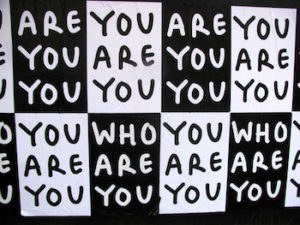The first comment I normally receive by emerging musicians after delivering a session on how-to-write-your-one-page-CV is “I don’t have anything to fill the page!!”. Like writing one’s biography, I would disagree and suggest there are many aspects of one’s life very applicable to place in the CV page that are sadly overlooked. Another observation – some musicians can write the most amazing biography including their capabilities, activities and ambitions, but the CV is bafflingly devoid of these details. A CV does not have to be long but it does need to make an impression on the reader.
A one-page CV is often advisable, unless otherwise requested, for grants or where you have absolutely no connection with the person who is potentially employing you – these readers will be time-poor and most likely impatient. Therefore a short and sweet CV is ideal – strong impact is gained when it is quick, targeted, and precise.
First things first
The type of audience reading your CV is going to determine how you prioritise its elements. For example, if applying for a teaching role at a school (usually as visiting, contractual or “peripatetic” teacher when first starting out) your teaching experience would be prioritised at the top of the page over your performance or compositional experience, and after your qualifications. Why? Because it is a common observation and understanding in school music departments and studio businesses that the most proficient performing musicians do not necessarily make the best teachers. It is those who can deconstruct and communicate the components of what they do in a clear, coherent and age-appropriate manner, and because we get to a stage with our music that is more intuitive than conscious, it does not develop our teaching capabilities. So in other words, placing performance experience at the top of the CV is a great way to antagonise the person who is looking to recruit you as it immediately implies you value your performance employment over your teaching. This is fine if this is true, but keep those thoughts to yourself and off the paper.
 Who are you?
Who are you?
The top of the CV needs to have all of your details. So, aside from your name – you will also need your contactable phone number, email address and website. Common sense? You bet. But what we forget to consider is the generational understanding of how the channels of information flow. Gen-X and older demographics still remember when Australia Post was a thriving letter delivery company, and will expect to see your postal address on your CV. Still common sense. But what people forget is that legal documents (like job offers, contracts or documents that need to be physically signed) are more likely to be sent via the post and those details always get pulled from the CV. It also inspires trust in the reader, as you are indicating your trust to them with these details.
Identity.
As mentioned, you need your name at the top – it does not have to include your middle name, and does not require last name then first name. But it is ideal to include how you identify yourself. Most graduating musicians have experience in at least two domains of employment – Performance and Teaching, or perhaps Composition and Teaching. This can easily appear below your name (if for a performing arts grant) as:
John Smith
Performer | Educator
For teaching employment:
John Smith
Educator | Performer
This can be followed by your qualifications if you have any yet – don’t forget your AMusA, LMusA achievements if you have them:
John Smith
Educator | Performer
AMusA LMusA
Or:
John Smith AMusA LMusA
Educator | Performer
Then place your snail mail address, phone number, email and website if applicable.
Address your address
Having the privilege of reading 1000’s of CVs over the last decade I have seen some fantastic examples of professionalism; however, there are always some surprises. This is largely to do with either emails that have been tightly hung on to since the early teens – e.g. something cute like cuddlykoala@notmail.com, to the more disturbing deadchicken666@email.com. Oh dear…
If not sure about whether it is time to adopt a more conservative email, ask a colleague their opinion or even better, a local business owner (e.g. a restaurateur’s transient staff means viewing a lot of applications). Or in the second email’s case – the police.
Labelling your life.
First up is to consider your Current Position. If someone asked you what you were currently doing once you graduated, how would you describe yourself? E.g.
Current Position
Freelance jazz/classical keyboardist and educator, and manager of eight-piece Brisbane-based event band “Fusion Funk”.
Next, you consider what is the most relevant to the reader of your CV and bundle the items into categories. The most common for emerging musicians is Qualifications, Achievements and Awards, Performance Employment, Education Employment, Recordings, Commissions, Current Projects, Future Projects, Community Engagement etc. You might be a very busy and pro-active person and need to cherry pick what you prioritise.
“Paid” vs “unpaid” vs “pay-to-play” employment.
Musicians’ careers are passion-based, which means when we start out we most likely work for free – this can be within the context of our degree environment, community bands, volunteer work, internships – and so on. There is also the “pay-to-play” employment where we have initiated and invested into an arts project but it has been a cost-neutral event (sometimes cost-negative) with the idea to keep building it into something bigger and better in the future, or, was a form of creative outlet, or a way to keep the networking mill grinding away.  The general consensus is that “paid” work can be classed as “Employment”, and “unpaid” work can be classed as “Experience”. “Pay-to-play” can be “Projects”. Volunteer and community work is what it is and holds much credibility in the eyes of a prospective employer or grant panellist and is usually situated closer to the end unless the advertised position is for a volunteer or community employee.
The general consensus is that “paid” work can be classed as “Employment”, and “unpaid” work can be classed as “Experience”. “Pay-to-play” can be “Projects”. Volunteer and community work is what it is and holds much credibility in the eyes of a prospective employer or grant panellist and is usually situated closer to the end unless the advertised position is for a volunteer or community employee.
Turning back time.
The “done” thing is to have the most recent item under each category title placed first. The primary reason behind this is to demonstrate that you have been proactive and possess up-to-date relevant skills. It also avoids frustrating the reader by having to start at the year 1972 and working their way through the timeline. Many will tell you that time is their precious resource – avoid wasting the reader’s. Sometimes people will focus on the three to five most recent years – the strategy behind this is to completely wipe away the student years (or high school) so the CV reads as more professional. Also – as the reader’s eye usually tracks from left to right, place the dates on the left (latest year first), hit the tab button, then create another column for the description. Always use years and not the word “current”. For example:
PERFORMANCE EXPERIENCE
2019 Principal horn with the Queensland Conservatorium Symphony Orchestra conducted by Johannes Fritsch
2018 – 2017 Member of QHorns – a 20-piece horn ensemble based at the Queensland Conservatorium Griffith University
2017 Associate Principal Horn with the Queensland Philharmonia Orchestra
But what is it?
Some larger institutions such as choirs, orchestras, opera companies, big bands, schools, universities etc have an established reputation therefore do not really need an explanation as to what it is – it is usually common knowledge. Sometimes the name itself doesn’t even need an explanation as it says it all e.g. The Brisbane Contemporary Jazz Orchestra. But sometimes it does. Often I will see bands listed in the CV that has me asking “what is that?” (and from the names of them – sometimes wondering if it is a band or perhaps a technology concept – music is so diverse, it can be hard to know). It is useful to explain what it is, and sometimes even place a website address so that the reader may be able to click on it and have a listen to the sound, look and feel of what you do. This is a good strategy for any kind of arts funding applications as usually we are limited to only submitting 10-20 minutes of sound bites. This is the opportunity to sneak in more information.
Referees – “to include or not include?” that is the question.
Sometimes it is requested, sometimes not. In choosing whether to add referee details I always consider the individual CV and the stage of career of the person. For an emerging musician – the names and status of the referees are going to help if those people are well chosen. Just like your biography we can capitalise on the “halo effect” – a high profile respected professional listed as potentially endorsing us sends an immediately positive message. Usually a CV would have at least two referees. A good thing to do is to demonstrate the expanse of your network. Emerging musicians will usually use one teacher and then perhaps an industry mentor, or perhaps a venue or festival operator they have worked with. If the CV is to support an application for a teaching position, it makes sense that other teachers who have either worked with you or employed you are placed on the CV. Those reasonably new to teaching sometimes place the parents of a student they currently teach which can be a tremendous indication of confidence in one’s abilities and the relationship with the parent. Either way, try to show the depth of your network and community outreach – it will speak of your proactivity and ability to embrace diversity. Defaulting to two lecturers from your own institution is ok – but not ideal as it suggests you do not “get out much”. Regardless, write down your referees as such:
<Title> <First Name><Last Name>
<Employment Position>
<Employment Institution>
<Phone number> <Email>
e.g.
Dr Diana Tolmie
Lecturer, Professional Practice
Queensland Conservatorium Griffith University
T +7 37375 6357 d.tolmie@griffith.edu.au
Never assume that only one point of contact is enough. Referees are usually rung – rarely emailed. Why? Because people will usually talk freely about you on the phone, rather than via a method of communication that is easily forwardable. <insert scary music>
 Non-music employment – should I place that in the CV too?
Non-music employment – should I place that in the CV too?
There has been much debate on transferable skills in the workplace – whether it be from university to employment, or from one job type to another. For example, a job in McDonalds’ requires team work skills, customer communication, reliability and time management plus more. All valuable skills that all employers prefer. But, if tailoring your CV around one profession, the mention of the retail or food and beverage employment can be an unnecessary distraction. It is better to reserve the space for items more closely related to the purpose of the CV. Another reason is that sometimes you will need to spell out what those transferable skills are from McDonalds’ to whatever music job/grant you are applying for – and this can chew up your CV space.
Selfie time?
Sometimes I see people place a photo in their CV. My recommendation is that unless you are an opera singer (of which this is the norm), don’t. A picture is worth a thousand words and can be presented and interpreted in all sorts of weird and wonderful ways. For a young person, this can also be prohibitive as the older person in the running with you may immediately become more employable just because they “look” a little more experienced.
Happy Birthday!??
Avoid placing your date of birth – similar reasons for avoiding a photo. Ageist attitudes are alive and well – someone may read your CV and be quite impressed with your proactivity, but then look at your age and default to someone older under the sometimes misguided assumption they will be more appropriate for the position/grant. We know that age and experience are not necessarily related, yet …
Tidy up your online image.
You’ve done your CV correctly and it has read well. The next thing anyone does when they are considering awarding a grant or employment is google you. Those questionable photos you thought were deleted from Facebook years ago could still possibly be out there somewhere. So, aside from prevention being the cure (i.e. do the silly stuff out of sight of a camera), aim to have your professional profile in a bunch of places that can drive the noise of other sites away. Be sure your security settings on your personal FB page is set to “friends only” and create a professional page that can rank higher than your personal one. Place your profile on LinkedIn, place good examples of your music up on YouTube, Vimeo, SoundCloud, have your own website that is meta-tagged properly with an easily searchable domain name.
It’s about your activity … and proactivity. If still struggling to find items to place in your CV to fill up the blank white space, write down what you are proposing to do, or have booked in the calendar. CV stands for curriculum vitae – which means “course of life”. It does not have to be completely retrospective. Future Projects, Current Ambitions – can be good titles.
Templates – help or hindrance?
Microsoft word and other online sites offer some pretty snazzy looking templates. They sometimes have some good inclusions such as icons for mail, LinkedIn, website, phone number etc. I personally find them frustrating as they force the reader to work hard for the information they seek as the sections are creatively dispersed on the page. Whereas, basic left to right reading, and viewing the document top to bottom in categories will allow the reader to gain more information without you wasting “page real-estate” – plus it is easier to read and navigate quickly.  It comes back to time being such a valuable resource, plus the emerging musician needs to prove their capabilities more strongly than their older competitors. Beware the “free templates” – sometimes when you export your CV from this online template, the font is too small to read – plus they often drive you to purchase the template.
It comes back to time being such a valuable resource, plus the emerging musician needs to prove their capabilities more strongly than their older competitors. Beware the “free templates” – sometimes when you export your CV from this online template, the font is too small to read – plus they often drive you to purchase the template.
Careful of your fonts
Consistency is the key – best to stick to the one font, and differentiate with capital letters, sentence case, bold, standard, and underlined. Have a method to the madness too – it needs to be relative – e.g. All Capitals for the titles of the categories.
So – lots to consider, and although not rocket-science, it is a science. Your CV is something that will expand to two pages, then more – and is something that you will need to add to as you keep on doing more awesome things in your life. Usually update it every 6 months if you can – you never know when someone says “Can you send me your CV please?”. The more immediate your response, the more professional and reliable you appear.


